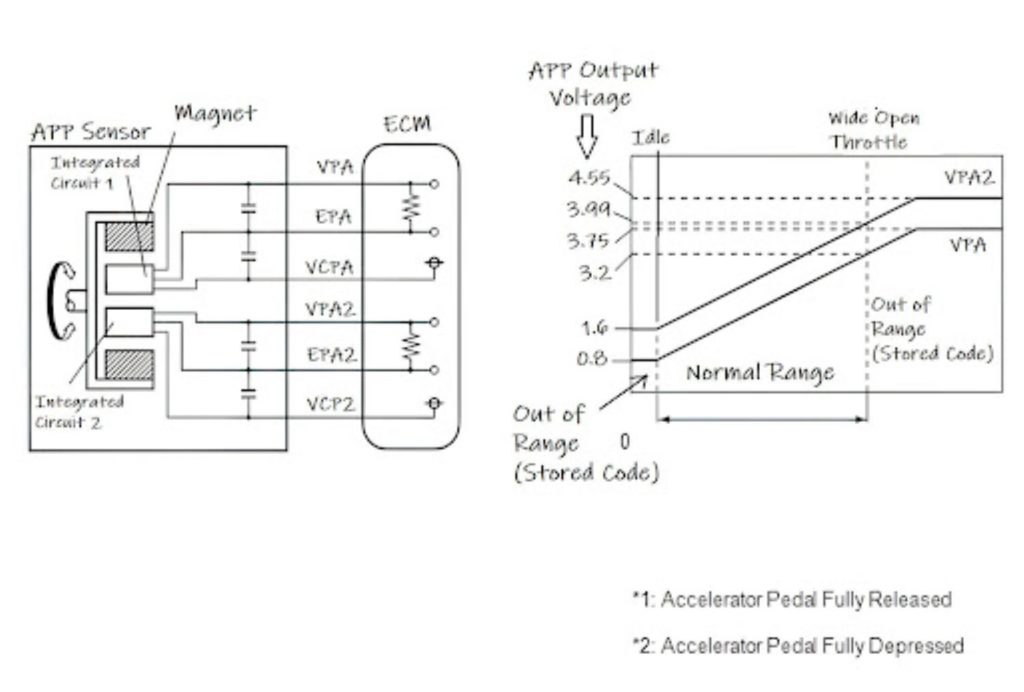Vehicles with electronically controlled transmissions / transaxles always have a transmission fluid temperature (TFT) sensor. This sensor is one of the engine sensors that the powertrain control module (PCM) or transmission control module (TCM) uses to calculate certain parameters.
Code P0713 is one of the trouble codes related to the TFT sensor. If you encounter this trouble code, this guide will help you find out what it means, its possible causes, and the common symptoms related to it.
What Does Code P0713 Mean?

Diagnostic trouble code (DTC) P0713 stands for “Transmission Fluid Temperature Sensor A Circuit High Input.”
Your vehicle uses a TFT sensor to determine shift points, line pressure, and torque converter clutch control. This sensor is located in the transmission valve body within the transmission oil pan. On just about every transmission, the TFT sensor is either part of the solenoid pack or the valve body harness rather than being serviced separately.
Transmission fluid has different heat / cold properties than engine oil in that it expands quite a bit when hot. While transmission fluid expands with heat (as does coolant), the viscosity of transmission fluid doesn’t change as much as that of engine oil.
The TFT sensor is a negative temperature coefficient (NTC) thermistor, which means that the internal resistance of the sensor should be inversely proportional to the oil temperature. The voltage signal it sends to the PCM typically goes low when the transmission fluid temperature goes up.
Typically, the voltage sent to the TFT sensor will be approximately 4.6 volts due to the internal current dropping resistor between the 5 volt rail and the sensor. As the sensor temperature increases, the resistance of the sensor decreases (thus the negative temperature coefficient designation), and as the resistance decreases, so does the measured voltage.
Lower voltage is interpreted as higher temperature to the algorithms in the PCM or transmission control module. This is an analog signal rather than a digital signal such as is provided by the fluid pressure switches.

Code P0713 is set once the PCM detects a high transmission fluid temperature sensor signal when it expects a low signal from the sensor. This usually indicates an open circuit. In such a case, warning lights may be illuminated, and the scan tool datastream will either show a substituted temperature reading or will read -40 degrees (F and C are the same number at that temperature)
Other TFT sensor-related codes include codes P0710, P0711, P0712, and P0714.
P0713 on Some Ford Vehicles
Code P0713 may appear on some Ford vehicles. On a 2005 Ford F-250 Super Duty XL 5.4L V8, for example, DTC P0713 can appear in the vehicle because of the following conditions:
- TFT sensor return circuit is open
- TFT sensor connector is damaged (check pins for damage, and for moisture)
- TFT sensor signal circuit is open or shorted to voltage
- TFT sensor has failed
- PCM has failed
Note: The definition of code P0713 can differ depending on the vehicle manufacturer. Consult the appropriate repair manual or repair database for the exact code definition.

What Are the Common Causes of the P0713 Code?
- Malfunctioning TFT sensor
- Wiring issues
- Transmission problems (damaged sensor)
What Are the Common Symptoms of the P0713 Code?
- Illuminated check engine light
- Harsh or delayed shifts
- Vehicle turns to limp mode
- Irregular torque converter clutch operation
How to Diagnose the P0713 Code
DTC P0713 is a generic code that can be logged across several makes and models. However, this does not mean that there’s only one set of steps in diagnosing its underlying cause. The diagnostic procedures for this code will vary depending on the vehicle. If you’re not an experienced automotive DIYer, it would be best to leave the job to professionals.
How to Fix the P0713 Code
There are a number of possible reasons behind the P0713 code in your vehicle. Depending on its make and model, the fixes for these issues can vary, but here are a few things you can try. While testing, refer to the manufacturer’s diagnostic flow chart for your vehicle’s standard operating parameters.
Visual Inspection
It’s best to start with a visual inspection of the transmission fluid temperature sensor and all the wiring that’s attached to it. Repair any loose connections, damaged wiring, or visible damage to the sensor. If you did find and repair any of these issues, clear the code and test to see if it comes back.
Preliminary Circuit Test
For preliminary testing, use a scan tool to keep an eye on the transmission fluid temperature (TFT) sensor data parameter. Disconnect the TFT sensor and check your scan tool to see if the value drops. Connect a jumper wire across the terminals and check the tool again. If it shows a very high temperature, that means your connectors are fine and the issue is likely with the sensor, not the circuit or the power control module (PCM).
TFT Sensor Test
If the problem is with the TFT sensor, then disconnect it from the connector. Use a digital multimeter that’s set to ohms and measure the resistance between the sensor’s two terminals. While keeping an eye on the meter values, start the engine. As the engine begins to warm up, the values of the TFT resistance are supposed to decrease steadily along with it. Watch the engine temperature gauge on the dash as well and make sure the engine reaches the right operating temperature.
If the TFT resistance doesn’t decrease as the engine warms, that means the sensor’s faulty and it needs to be replaced. This should fix the P0713 code.
Circuit Check
If the TFT sensor isn’t the problem, you’ll need to do a circuit check. Take a look at the circuit’s reference voltage side. Turn your ignition on before starting this test. Using a digital multimeter set to volts, check for a five-volt reference from the PCM at one of the TFT sensor’s two terminals. If there’s no sign of a reference signal, turn off the ignition and set the multimeter to ohms. Connect the meter to the reference voltage pin on the TFT as well as the reference voltage pin on the PCM. You’ll recognize signs of an open circuit between the PCM and the sensor if the meter reads out of limits (OL). You’ll need to locate and repair this circuit if you want to resolve the P0713 code.
On the other hand, if the meter reads a numeric value, that means there’s continuity and you’ll need to check if there’s five volts coming out of the PCM’s reference voltage terminal. Without the five-volt reference, you can conclude that the PCM itself is faulty and in need of repair.
Circuit Ground Side Check
To check the ground side of the TFT circuit, set the multimeter to ohms and make sure your ignition is off. Connect the meter to the TFT sensor’s ground terminal and the PCM’s ground terminal. If the meter reads OL, you’ve found an open circuit between the PCM and the sensor. Locate and repair this open circuit to get rid of the P0713 code.
Alternatively, there’s continuity if the meter’s showing a numeric value. Check the quality of the PCM’s ground by attaching one of the meter’s leads to the PCM ground terminal. Attach the other lead to the chassis ground. If the meter reads OL, then you’ve located an open circuit between the PCM and ground that needs repair.
If these check out okay, then the problem’s probably with the transmission. Any additional codes being read connected to transmission codes can help you look for possible transmission issues.
Any information provided on this Website is for informational purposes only and is not intended to replace consultation with a professional mechanic. The accuracy and timeliness of the information may change from the time of publication.


















